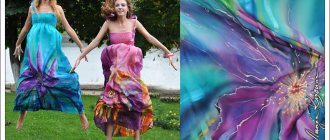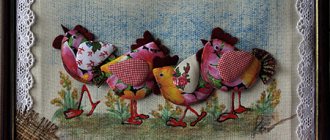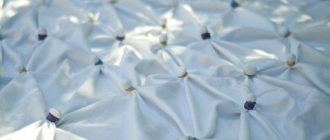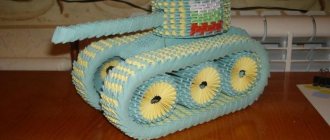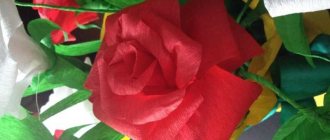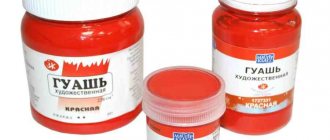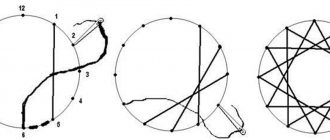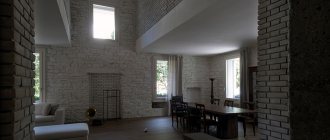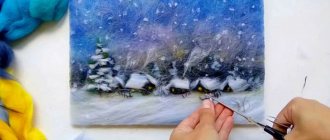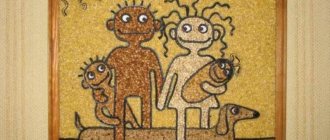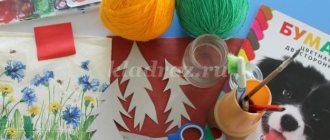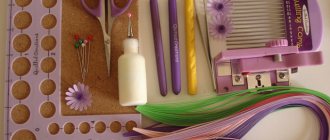The emergence of cold batik
Its history begins with the appearance of hot batik in Europe. Dutch merchants brought fabrics painted using this technique from colonized Java. And soon a book about this art aroused great interest among Europeans. But hot batik is undoubtedly a very labor-intensive process, so artists began to look for alternative ways to make the painting process easier and faster.
pixabay.com
At the beginning of the 20th century, this alternative was found. You could use reserve instead of wax. Artists, united in artels, were able to use cold batik in the production of silk painting. In Russia, this technique has become popular since 1936.
From the history of batik
It is difficult to say who, when and where figured out how to apply a design to fabric using reserve substances, that is, substances that prevent paint from penetrating into the fabric. The role of such substances at different times in different regions was performed by compositions based on beeswax, various resins, flour, white clay, and rice paste. We find the first stories about the method of coloring using reserves in Pliny the Elder. Here is how he describes this technique: “In Egypt they dye clothes in an amazing way: after the white cloth is drawn, it is impregnated not with paints, but with substances that absorb paints; when this is done, nothing is visible on the panel, but, having immersed it in a cauldron of hot paint, at the appropriate time it is taken out painted.” But even earlier this method was known in Peru, Sumer, and Africa. As a rule, these were two-color fabrics, where the pattern was the color of the undyed fabric and the background was colored.
A more complex type of painting developed in Indonesia. There are two versions of the appearance of batik in Indonesia. According to one of them, the batik technique was imported from India in the 6th-7th centuries. According to another version, this is local culture. Most likely, the art of batik originated from the imitation of Indian printed cloth, which was exported to Java and Sumatra. One way or another, it was the Indonesian masters, or rather craftswomen, since batik has been considered a woman’s work since ancient times, who brought the long-known technique to perfection. First, the pattern was applied using a bamboo stick and melted wax. Later, the wand was replaced by an instrument invented in Java - chanting. It allowed for more subtle drawing of lines, dots, and curls. The fabric was dipped into the dye vat up to 10 times, producing rich shades of color.
In the 19th century, Indonesians began to use stamps when making batik. On the one hand, this simplified the work, on the other, it made it physically more difficult, so printed batik is a man’s job. Batik fabrics were and are of great importance to the people of Indonesia. Not a single ceremony is complete without richly ornamented clothing. The ornament has a symbolic meaning, and each class, each holiday or ritual has its own clothes with its own patterns.
In India, the batik technique was not widely used; it was eclipsed by the famous Indian printed cloth. But there were 2 techniques that are also classified as batik. These are bandhana and laheriya. The bandhan technique is otherwise called knotted batik. The fabric is tied into knots and dyed using brushes or by immersion in a dye vat. After drying, the fabric is untied and smoothed. The pattern is made up of randomly located light spots or stars. The laheriya technique is similar to bandhana, but when dyeing the fabric, it is twisted into a rope and tied in those places where undyed should remain.
Since the 6th-7th century, the technique has been known in China. It was called lazi - wax patterns. But if in India, Indonesia and other countries batik was made on cotton, then the Chinese used silk. Patterns were applied to the fabric with melted wax, and then the fabric was immersed in a tank of dye. There were no more than 4 staining cycles, but usually 2-3.
Batik came to Japan from India or China and was called rocati. This technique was used to paint screens and clothing. Also known was a wax heel - surimon, and since the 17th century, the yuzen technique, in which rice paste was used instead of wax. The stencil technique - tyugata-jume - was also used. As well as the tsutsugaki technique, when the pattern was applied using starch and a tube (tsutsu) made of Japanese paper or thick cotton fabric. In addition, the Japanese invented the shibori technique, where fabric is folded like origami and dyed while folded. The result is fabric decorated with lines, squares, triangles and other geometric shapes, depending on the folding method.
The batik technique was brought to Europe by Dutch sailors at the end of the 18th century. From the mid-19th century, the process of industrialization and mechanization of manual labor began in Europe, but at the same time interest in crafts and non-European cultures arose. By the beginning of the 20th century, batik became very popular among artists. The cold batik technique appears as a simpler analogue of the traditional hot batik technique.
Russian batik.
In Ancient Rus' there was a dyeing method very similar to Javanese batik. It was called a cubic heel or a knockout. Like an ordinary heel, it was brought to Rus' in the 12th century by merchants from India and was widely developed. It was as follows. A special composition based on white clay - wapa - was applied to a carved board with a pattern, the so-called "manner", and the entire fabric was imprinted with such a board. After the vapa dried, the fabric was immersed in a tank of dye - a cube. As a rule, the fabric was dyed in indigo from light blue to blue-violet, so master dyers were also called blue-makers, and hut-workshops were called blue-makers. After dyeing, the wax was removed from the fabric using a weak solution of sulfuric acid.
At the end of the 19th century, artisan textile dyeing declined sharply due to the development of the manufacturing industry. When batik began to develop in Soviet Russia in the 20-30s of the 20th century, it was no longer in any way connected with ancient Russian traditions. Russian craftsmen adopted European experience and European cold batik techniques. At first, individual artists tried themselves in this art form. N. Lamanova, E. E. Lansere, M. V. Libakov, A. G. Tyshler, V. A. Shchuko were fond of batik. Later, artels began to be created that were engaged in painting kerchiefs, scarves, shawls, and scarves on revolutionary and folk themes.
Fabric painting process
It consists of two large stages - preparation and direct work on the painting.
Preparatory stages
At the first stage, the sketch is carefully worked out. Experienced craftsmen usually skip this step, since they already know how to work without it.
- Preparing a sketch.
Flowers are often used as prints and patterns. Such an ornament can be easily integrated into any compositional scheme. In addition, the features of the technique make it possible to make flowers on fabric detailed and expressive.
It is recommended to make the sketch in full size. In essence, this allows you to get a good grip on your hand before painting on silk. This way you can detect and correct errors, build a work process and transfer the idea onto the canvas as accurately as possible.
- Sketch requirements.
Not all pictures are suitable for performing the cold batik technique. It is important that each image element in the sketch has closed contours. This is necessary so that the colors do not mix with each other (unless this is not the artist’s intention). Also, the sketch must comply with the laws of composition. The color scheme should also be considered at the first stage.
When a beginner is just gaining experience, it is better to limit the number of small details. This is a risk of smearing the reserve, making the drawing “dirty”. Small details are also more difficult to outline with a reserve; they often merge into one spot.
After preparing the sketch, you can outline it with a marker. This will make the lines more visible through the fabric.
- Preparation of tools and workplace.
The prepared fabric must be pulled tightly onto the stretcher so that when wet it does not sag and the paint does not flow into adjacent areas. Some artists stretch the fabric when it is wet; in this state it is more elastic.
Special frames are used for batik.
Before starting work, prepare the color scheme. Batik paints do not contain white; to create light shades they are diluted with water. The resulting colors are tested on a sample of the same density as the base fabric. This way you can make sure whether the color intensity is as intended.
Special tools for cold painting - directly related to the reserve. This can be a glass tube and a bulb, with the help of which the reserve is collected, or a ready-made tube with a reserve. Another option is a special plastic container with a long spout, which can be easily selected from the photo.
decor-doma.ru
A nozzle is placed on the spout to achieve fine lines.
The rest of the necessary tools are the same as for free painting.
Working on the painting
- Transferring the sketch to fabric.
The sketch is attached to the fabric from the wrong side. It should fit tightly so that all lines can be visible. A light table is often used for this purpose.
If the reserve is dark, then all lines are transferred to the fabric with a pencil. If transparent, use a disappearing marker.
- Application of a reserve composition.
The composition is applied along all the lines provided for in the sketch.
The quality of the application is checked with clean water - the area of the intended painting is moistened. If the water has not left the boundaries, the reserve has been applied well. If the water has leaked out, then the fabric is dried and the line is duplicated.
If the canvas is attached to a stretcher, the paint may flow from one area to another. To prevent this, it is enough to draw a reserve line along the perimeter of the work, where the material comes into contact with the inner edge of the subframe.
- Work in color.
- It is better to start painting from light areas. Mistakes made with light shades can later be covered up with dark ones.
- If the paint dries prematurely, it forms a defect (running). To ensure that the paint is applied evenly, the fabric is moistened before starting the process.
- It is also necessary to wet the material if the paint is applied with an ombre effect with a gradient of several colors.
- The sharpness of color transitions depends on the degree of moisture. So, in order to draw a clear line, the brush with paint and the surface of the silk must be almost dry.
- Hidden reserve.
The contour around each element adds additional “decorativeness” to the cold batik. If more complex and realistic work is planned, then the “hidden reserve” technique is used.
- The transparent reserve is applied to the dried painted fabric.
- After this, the next color, darker than the background color, is poured inside the new outline.
- Then the silhouette of the flowers is drawn with a transparent reserve. It is important to apply the reserve without tearing, because it will be difficult to identify the defect without wetting the fabric. After the reserve has dried, the drawing is filled with a rich color. The result is flowers without a white outline. If the reserve were applied to undyed fabric, the opposite effect would occur.
Hidden reserve is work in several overlaps; its technique can be compared to hot batik. The result is the impression of working without reserve.
Features by art
Paints are labeled according to their intended purpose and have accompanying instructions for use. Acrylic and aniline paints are diluted with water, but do not rush to get it from the tap. Water should be used pre-purified or distilled to avoid unsightly stains due to impurities in the water. Although, on the contrary, if you specifically add ordinary table salt to the solution, you can paint beautiful spotted drops.
In batik, painting usually begins with the application of a special reserve compound that will limit the paint.
It is applied in such a way that closed islands are formed, and if everything is done correctly, it will completely prevent paint from getting beyond the boundaries of the design.
Paints are mostly water-based, so you can vary the shades and saturation by diluting them in water. The brushes used are mostly synthetic. On silk and thin fabrics, light aniline dyes are often used; acrylic is taken as a heavy film and it is advisable to use it either in a very diluted form, which will lead to a loss of brightness of the colors, or on dense fabrics. However, rubber applications are quite common on T-shirts, which in most cases do not spoil the look.
Related article: Pig from a plastic bottle: step-by-step instructions with video
To paint on fabric, you need to stock up not only with paints and a special solution for the reserve, but also with quite exotic tools - tubes for liquid reserve based on gasoline and rubber glue and copper chanting, if hot wax is used.
The fabric is secured to a frame made of wooden slats using buttons. You can use a board if the amount of work is small. Pictures are also applied in various ways. Depending on the degree of artistic skills, you can use stencils and templates, or paint by hand with brushes.
Fixing the dye
Fixing the dye is an important final stage, ensuring the resistance of the design to water. If the work is done with acrylic paints, then they need to be fixed with an iron on the “cotton” setting, ironing for 2-3 minutes from the wrong side. Some manufacturers provide for fixing the dye in the oven, microwave, or using a special fixative liquid.
If the work is done with steam-cured paints, it is exposed to steam at a constant pressure of 0.5 atm. To do this, you need professional electric steamers either for gas stoves or an autoclave. It is also possible to fix the dye at home without special equipment. But then only experienced masters achieve good results.
Specifics of the cold batik technique
Cold batik technology allows you to paint different areas of the fabric in any order. Due to the fact that the reserve divides the painting into fragments, the number of colors used and the options for their combinations are not limited.
pixabay.com
This type of painting is used for clothing, interior decoration, and creating accessories. Fabrics painted using this technique are softer to the touch than those painted using the hot batik technique.
Cold batik does not have such a rich history of appearance and development as hot batik, but it is very convenient and is very popular among both beginners and professional artists.
